Portrunny Bay is located on the shores of Lough Ree in the mid‐Shannon catchment area, it covers an approximate area of 105km2 and stretching for 26km from Lanesboro to Athlone. It comprises important habitats for indigenous plant and animal species, many of which are afforded special protection under the EU Habitats Directive. The archaeological landscape of the area shows how generations sustained a living directly from the lake.
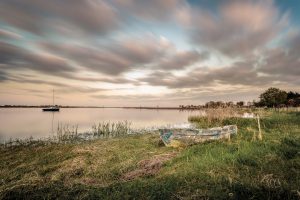 The migration of indigenous fish and bird species predated even the earliest of these settlers. Ancestral salmonids and eels colonised these waters after the last ice age, the lake is still important for salmon, trout and eels. A very rare salmonid species, pollan (Coregonus autumnalis) is still present in the lake, although illusive and preferring the deeper sections. The lake is an important breeding and feeding area for rare bird species including duck species, golden plover, sand martins, terns, swans and grebes.
The migration of indigenous fish and bird species predated even the earliest of these settlers. Ancestral salmonids and eels colonised these waters after the last ice age, the lake is still important for salmon, trout and eels. A very rare salmonid species, pollan (Coregonus autumnalis) is still present in the lake, although illusive and preferring the deeper sections. The lake is an important breeding and feeding area for rare bird species including duck species, golden plover, sand martins, terns, swans and grebes.
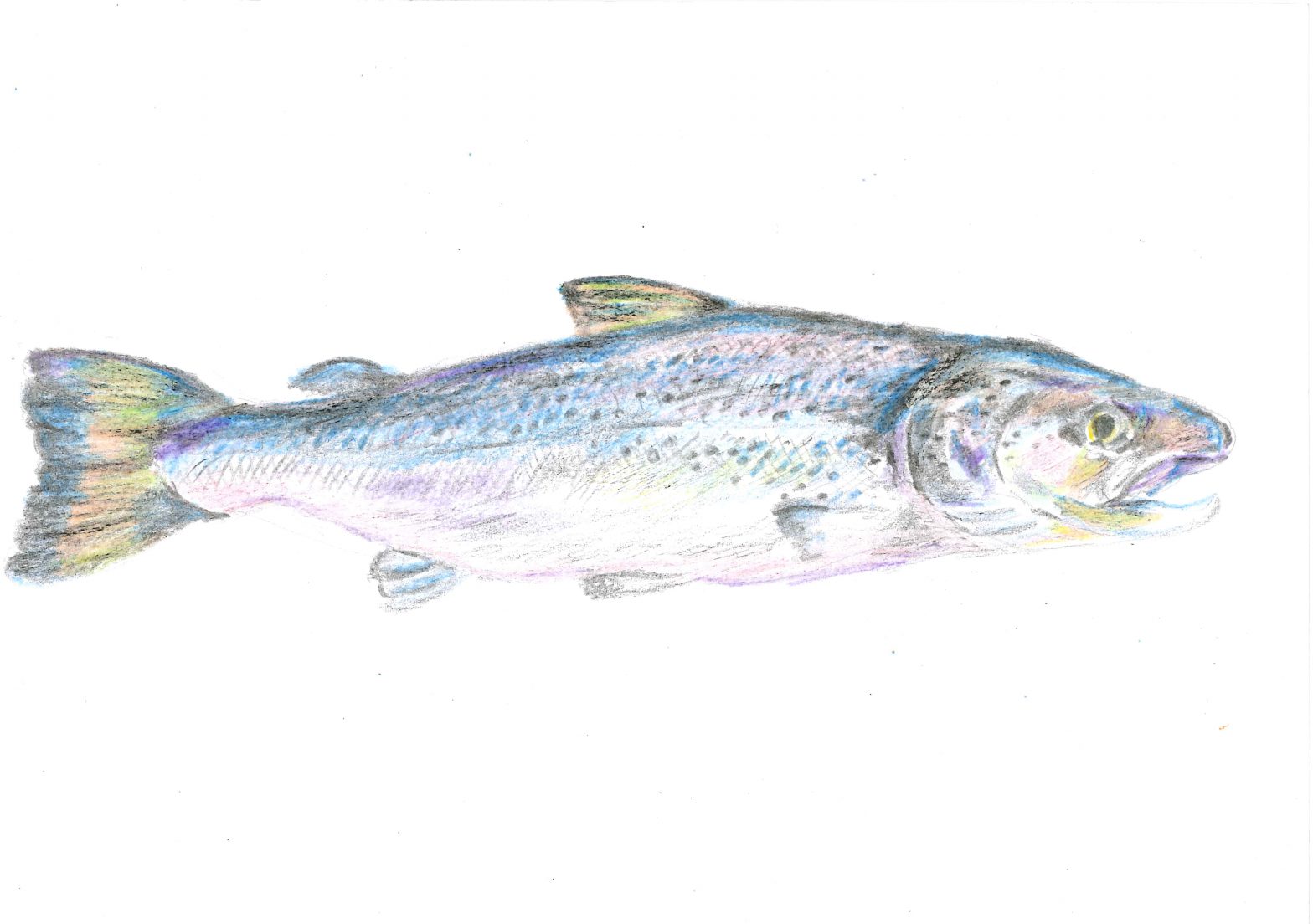
Atlantic Salmon (Salmo salar)
The Atlantic Salmon is native to Ireland, including the River Shannon and Lough Ree. Ancestral salmonids colonised these waters post the last ice age and continue to undergo extensive migrations to and from the north Atlantic. Adult salmon from many of the river systems in Lough Ree return to their natal areas to spawn. All spawning occurs in the faster gravel sections of the river sub‐catchment.
Young salmon spend 1‐2 years in freshwater, before undergoing major physiological and behavioural changes and returning to sea as smolts. Salmon numbers in Lough Ree and the wider Shannon have declined somewhat over a number of decades due largely to impacts from human activities and climate change.
Brown Trout (Salmo trutta)
The Brown Trout is a native salmonid found in significant numbers in Lough Ree. The trout spawns in shallow river sections in the Lough Ree sub‐catchments and migrate as older trout to the lake, to utilise large feeding resources there. Spawning takes place from late November to January. Eggs are spawned in ‘redds’ dug out by female fish in the gravels. Eggs hatch between March‐April into fry which rely heavily on the gravels for refuge.
Trout are territorial fish and feed on a variety of aquatic invertebrates found in abundance in these rich limestone catchments. The larger lake trout can be piscivorous also. Trout, like salmon return to their natal rivers and streams to spawn.
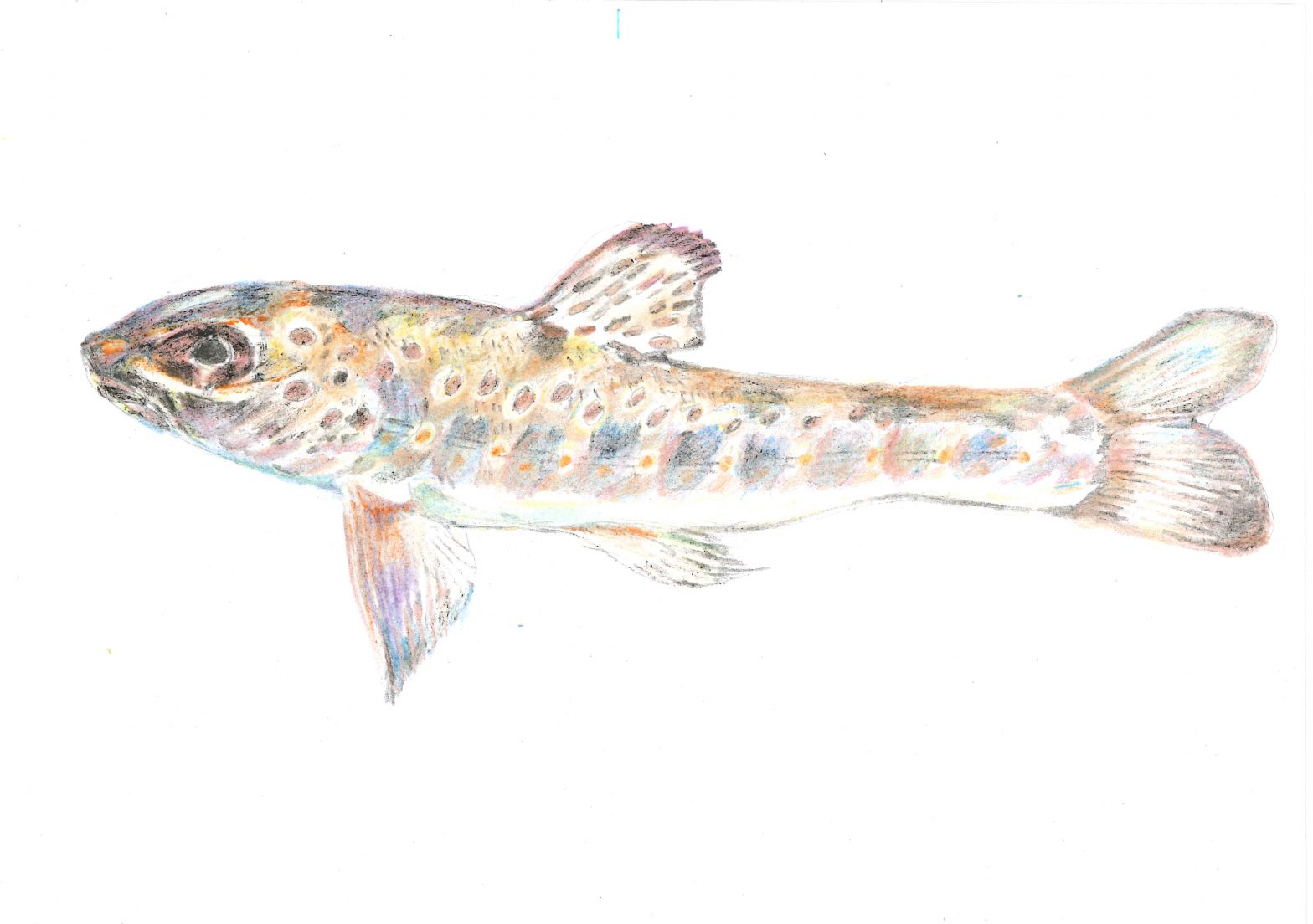


Pike (Esox Lucius), Perch (Perca Fluvialtilis) and coarse fish
The Pike and coarse fish (which are introduced species) are present in abundance in Lough Ree and are important target species for anglers. These coarse fish species are adapted to deeper slower sections of lakes and rivers. Coarse fish such as perch, roach, rudd and bream migrate around the lake to feed. Pike are more sedentary and are ambush predators, preferring weeded areas.
Pike can reach large sizes in Lough Ree, with anglers often recording fish greater than 110cm. Perch undergo large shoaling migrations around the lake and can often be seen breaching the surface in pursuit of aquatic insects.
Pollan (Coregonus autumnalis)
The pollan is a glacial relic and a very rare species in Ireland, affording it a listing in the Irish Red Status for endangered species. It is also an Annex V species under the EU Habitats Directive. Like other species with ancestral migrants, it is one of the truly indigenous Irish freshwater fish species. It is present in small numbers in Lough Ree, although rarely seen. It is only present in five lakes in Ireland and Northern Ireland and isn’t found in any other elsewhere in Europe.
Although a salmonid species (related to trout and salmon) it is very silvery and almost herring like in morphology. It grows to 0.7kg and spawns in gravel areas within Lough Ree. It feeds mainly on smaller planktonic animals and undergoes feeding and spawning migrations within Lough Ree and potentially beyond.
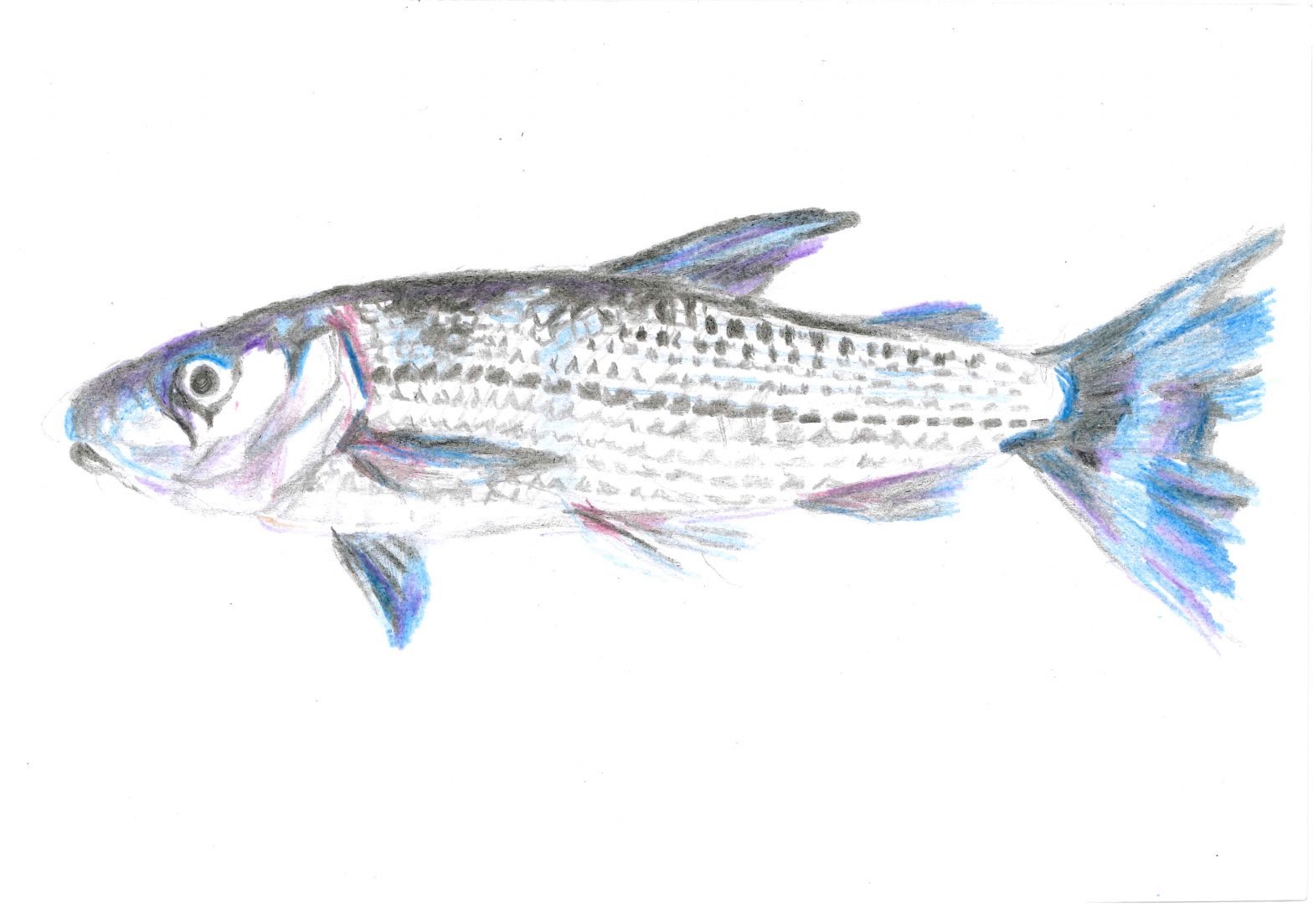
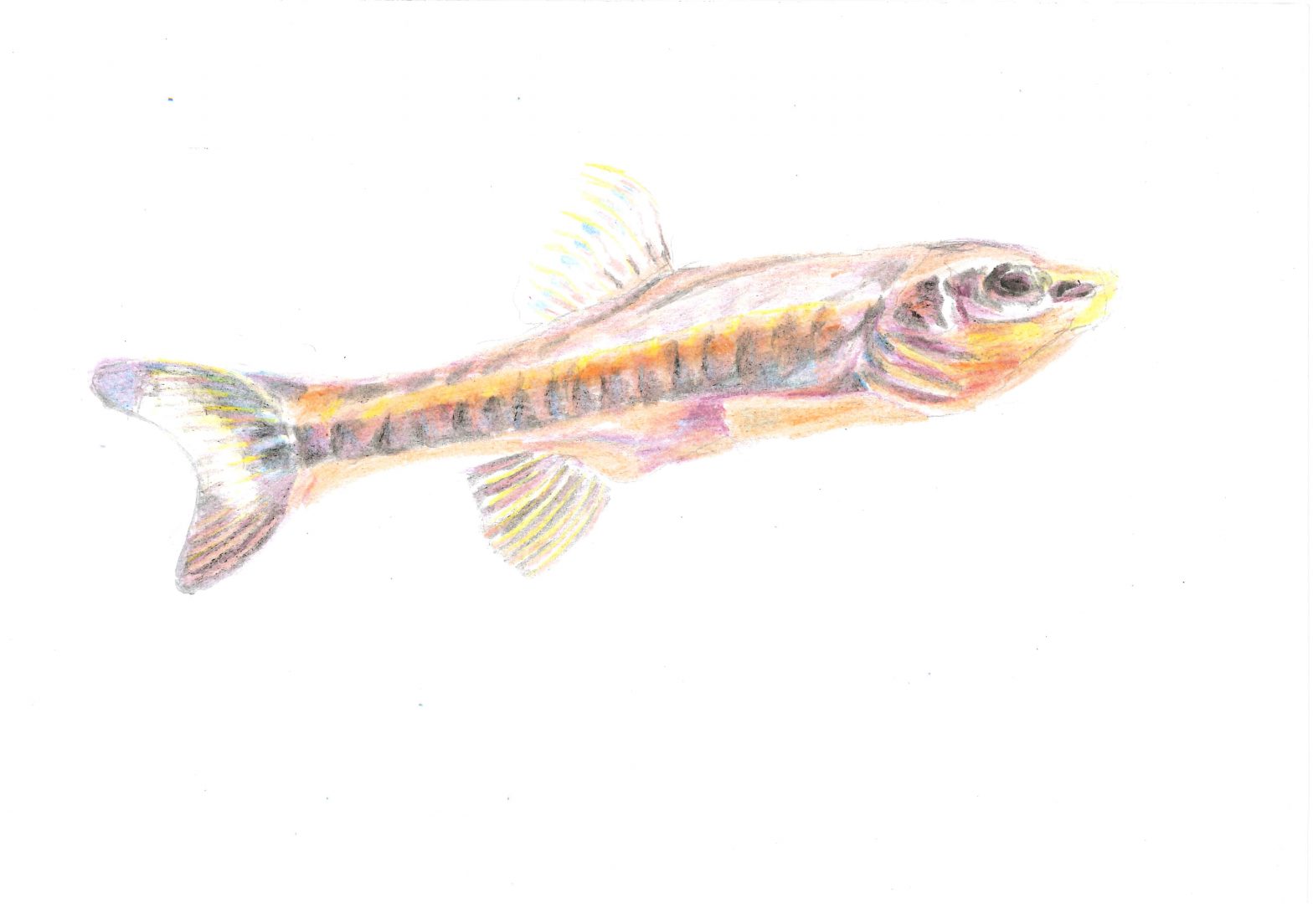
Minnow (Phoxinus phoxinus)
Minnow are a common fish species of clean rivers and lakes. Introduced to Ireland, it is currently a well-established species and forms an important part of the diet of many piscivorous fish and birds. Minnow grow to between 6‐9cm and are a common shoaling fish, a predator‐avoidance adaptation.
Their colouration comprises dark olive on the dorsal side, lighter olive sides with dark blotches and white belly. Minnow feed on small invertebrates, predominantly on the lake bed and margins, but may rise to the surface to tear apart flies on the wing.
European eel (Anguilla anguilla)
The European eel is an important native species to Irish waters. The eel colonises practically all types of aquatic habitats in Ireland, from lakes and rivers to canals. The eel is incredibly adapted to a benthic and nocturnal existence, with a long snakelike body shape, keen sense of smell and mucous layers on the outer extremities, giving it the slimy feel.
The eel feeds on aquatic insects and small fish. Like the salmon, it undergoes extensive feeding and spawning migrations. In the reverse order to the salmon, the eel feeds in freshwater and undergoes a long migration to the Sargasso Sea to spawn.
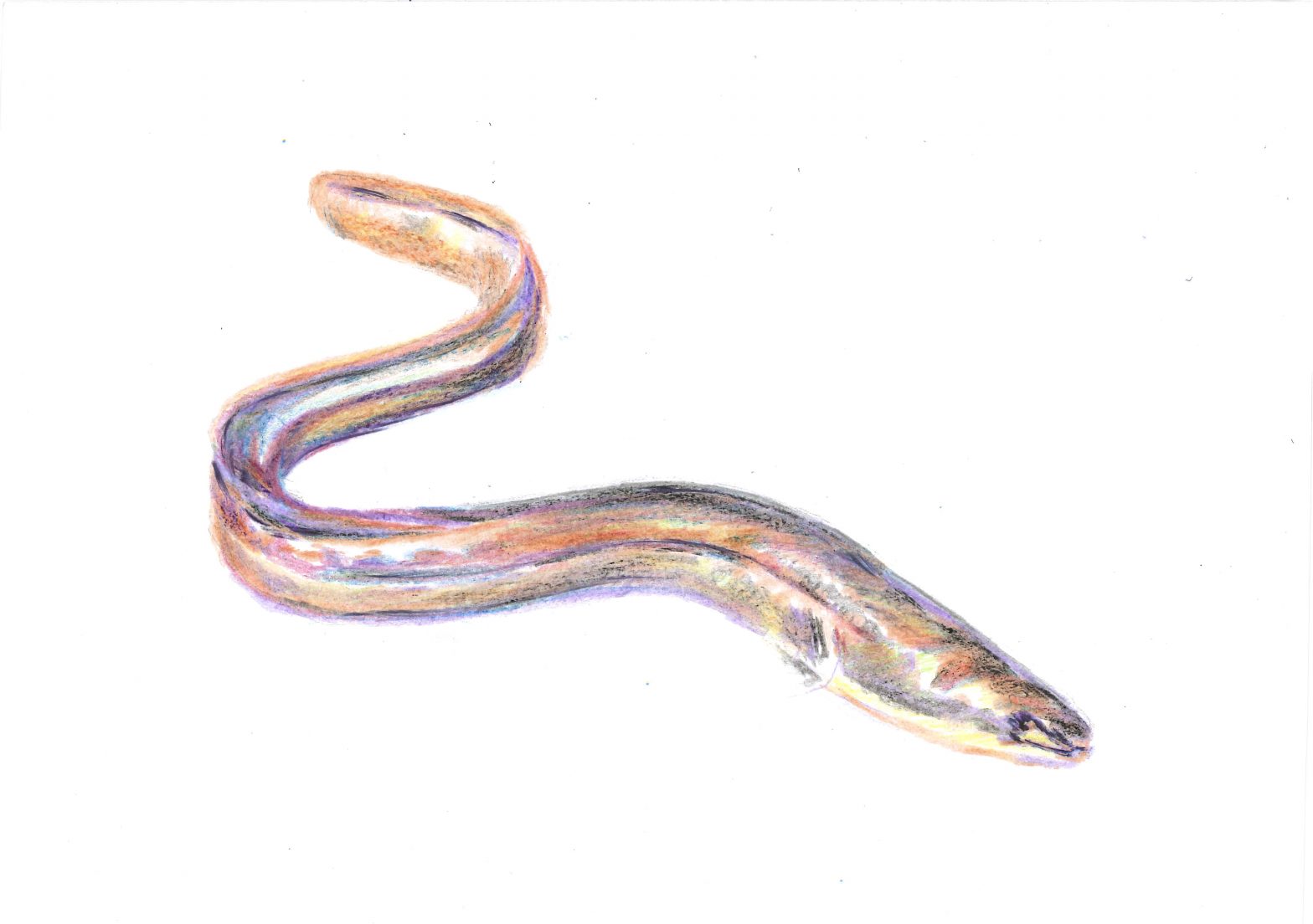
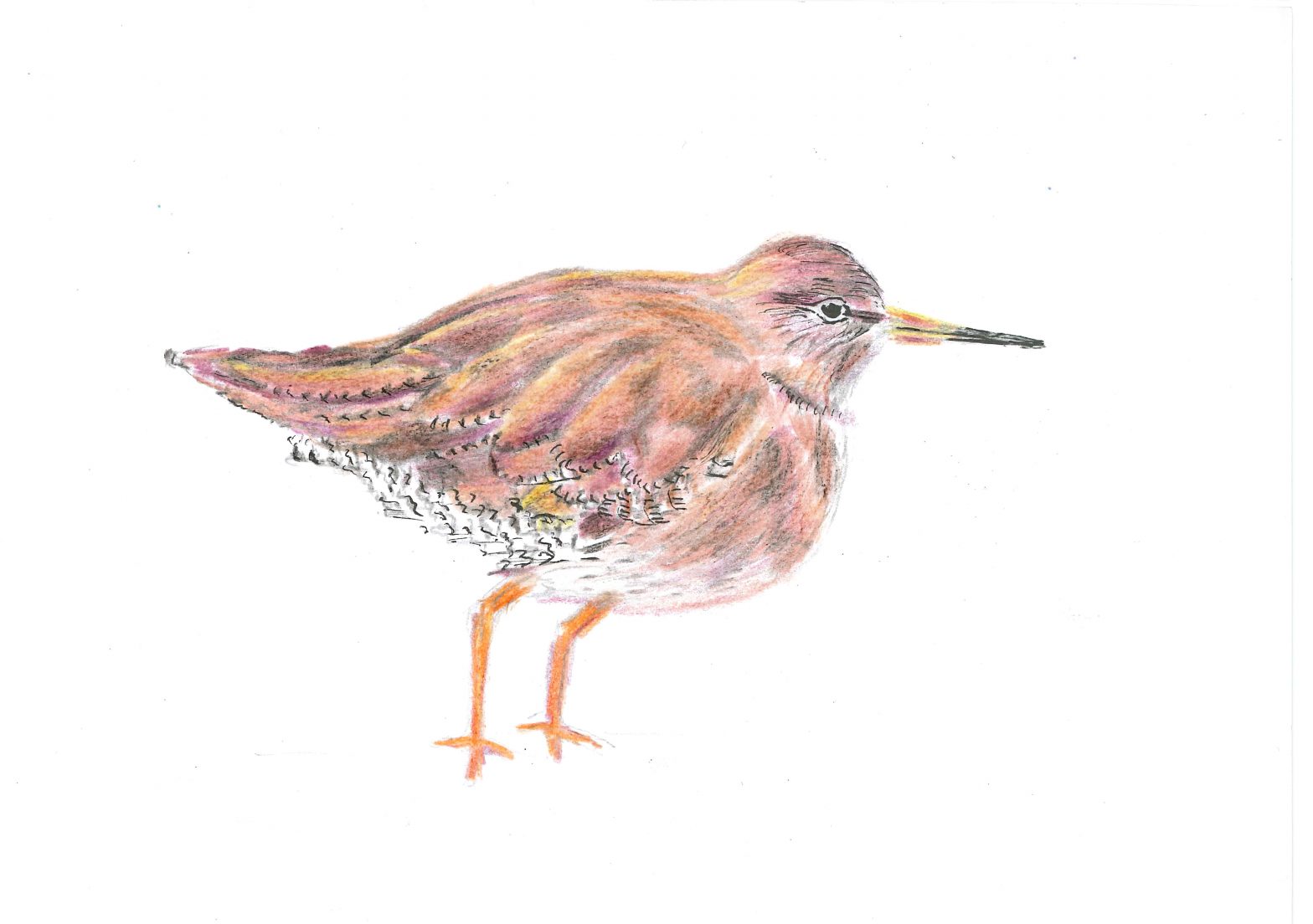
Redshank (Tringa totanus)
The Redshank (Tringa totanus) is a common wader of wetlands throughout the country and the Shannon Callows. Redshanks will nest in any wetland, from damp meadows to saltmarsh, often at high densities. Redshanks have red legs and bill, and show white up the back and on the wings in flight.
They are brown, becoming somewhat lighter-toned in winter. Redshank feed mostly during the day along the upper shore of estuaries and along muddy river channels. Like most waders, they feed on small invertebrates.
Heron (Ardea cinerea)
The heron is a large wading bird closely related to cranes, storks and egrets. It has a light grey plumage on the upper side, with dark stripe on the head and white plumage on the underside. It has a long sharp yellow beak for catching fish prey. It will prey on fish (such as eels, young salmonids, minnow) and on crayfish, frogs and small insects.
It is common in Irish freshwater habitats including rivers, lakes, streams, canals and wetlands. The heron breeds in reed beds or trees close to watercourses and lays between 3‐4 eggs. Irish birds remain resident in Ireland and are often joined by colonies from more northern latitudes for over‐wintering.
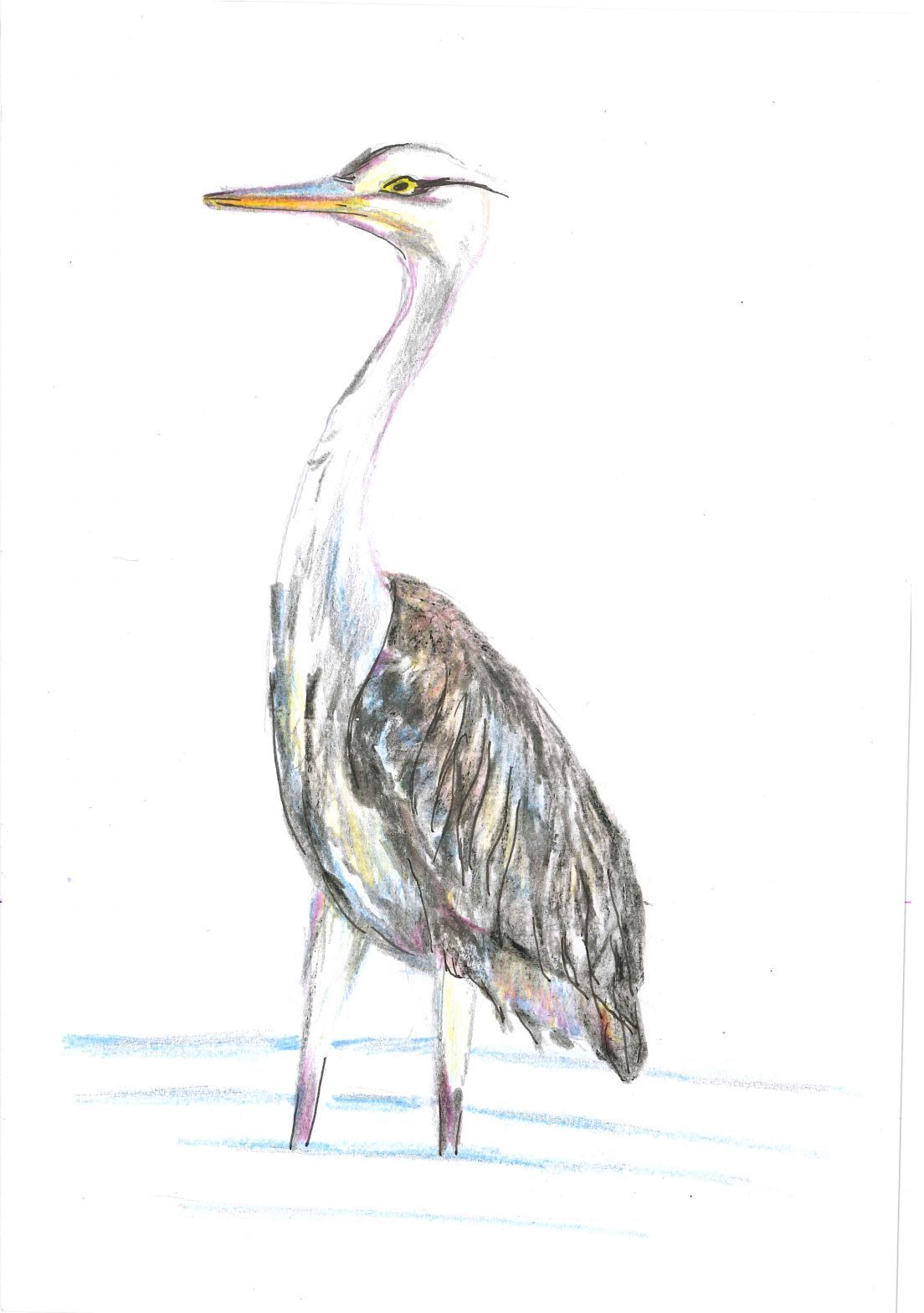

Cormorant (Phalacrocorax carbo)
The cormorant is a distinctive bird occurring in increasing numbers inland and on Lough Ree. It is related to the Shag and is tall when resting on the shore or on rocks. It is black in colour with dark webbed feet. It has a long body, neck and long hooked bill. It is often seen standing with wings outstretched to dry.
It swims low in the water and dives in search of fish prey. It commonly feeds on salmonids and eels. It can be seen in colonies on the trees on islands in Lough Ree where breeding populations are increasing. It has protected status in Ireland due to its patchy distribution.
Otter (Lutra lutra)
The otter is well distributed in Irish freshwater and coastal habitats. It is a member of the Mustelid family, which includes mink, stoats and pine martins. The otter’s fur is characteristically dark brown, with a pale creamy colour on the throat. It is an important keystone predator in freshwater ecosystems and feeds mainly on stickleback, salmonids, crayfish and frogs. The otter is adapted to life around watercourses. It can dive for up to 40 seconds in search of prey, has webbing on its feet for swimming and has long insulating fur.
Otters build ‘holts’ along the water edge, in fallen down trees or in excavated bank burrows. They can grow to 100cm and attain weights of up to 11kgs. Healthy otter numbers reflect a functioning ecosystem. Their numbers can be threatened by the loss of riparian areas, water pollution and tangling in nets. They are protected under the EU Habitats Directive.
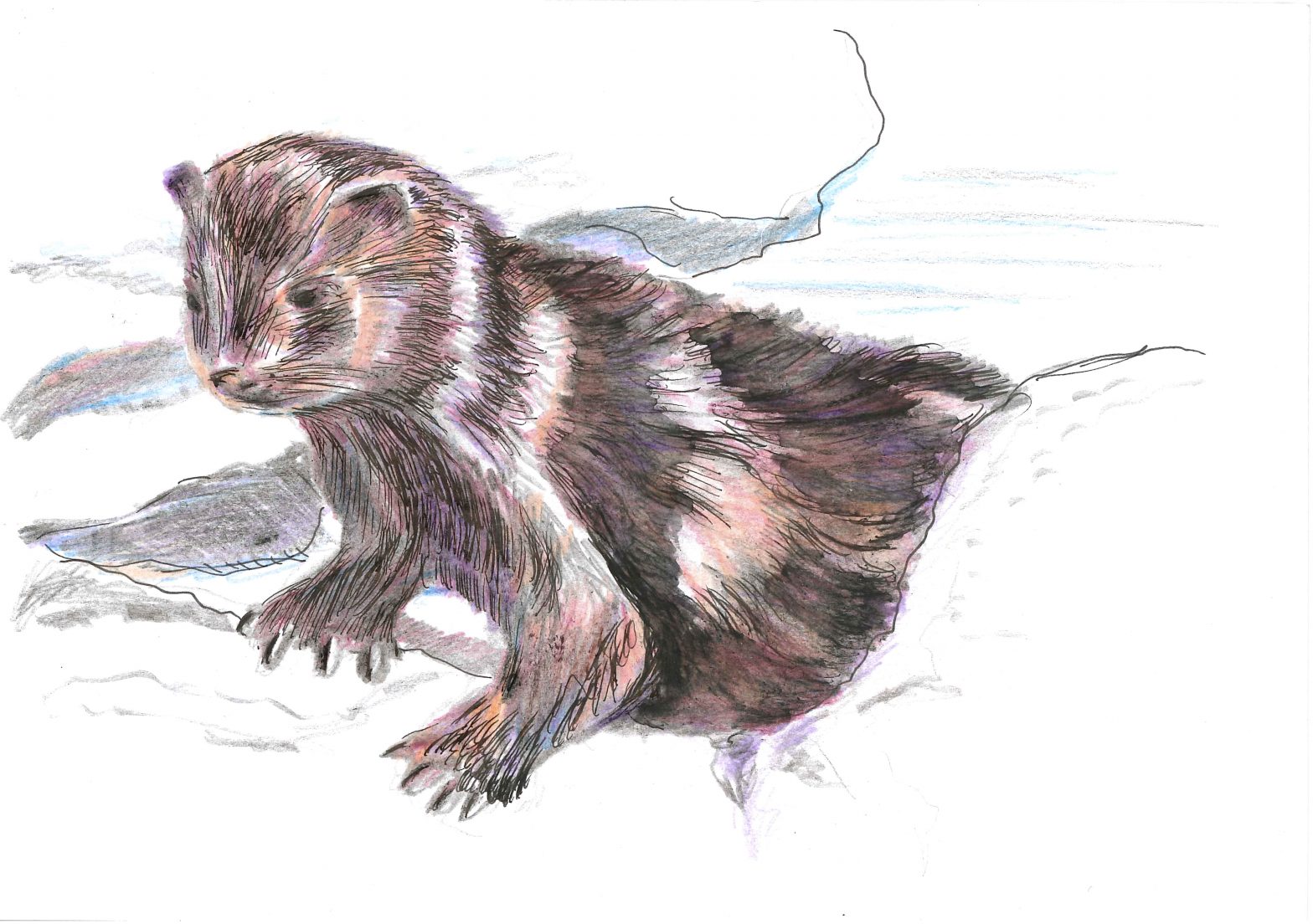
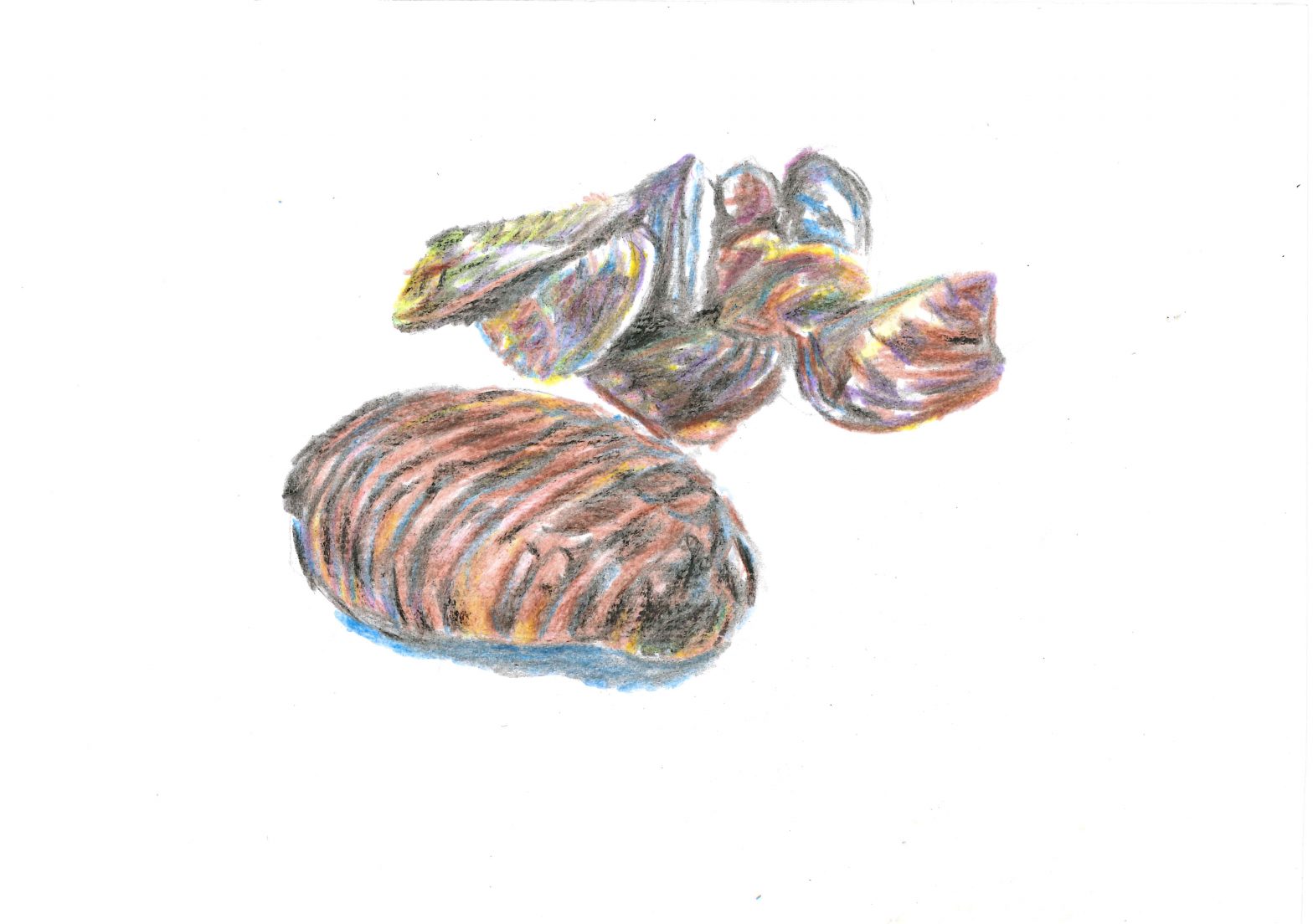
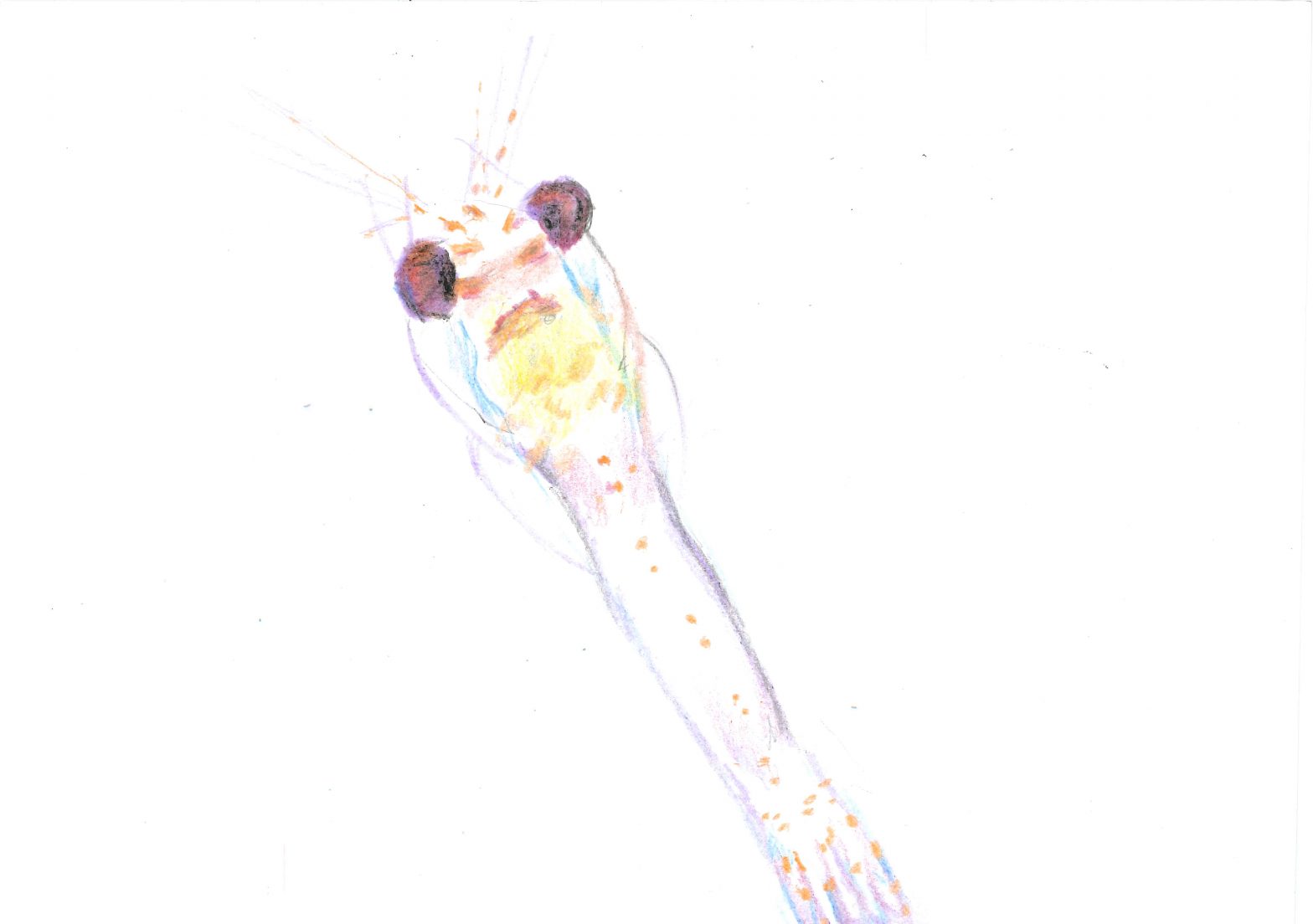
Invasive species
Some common invasive aquatic animals in Lough Ree include the zebra mussel, bloody red shrimp, the Asian clam and the American mink. Increased globalisation, trade and travel has facilitated the spread of species from their native environments. Transferring of water and emptying aquaria into natural ecosystems has been implicated in the spread of invasives also.
Introduced species are particularly invasive when they have no natural predators and/or outcompete with our native species. The main threats are outcompeting native species, predating on native species, potentially spreading disease, altering ecosystems, fouling moorings or pipes.
Images kindly designed and provided by Cora Mugan.
